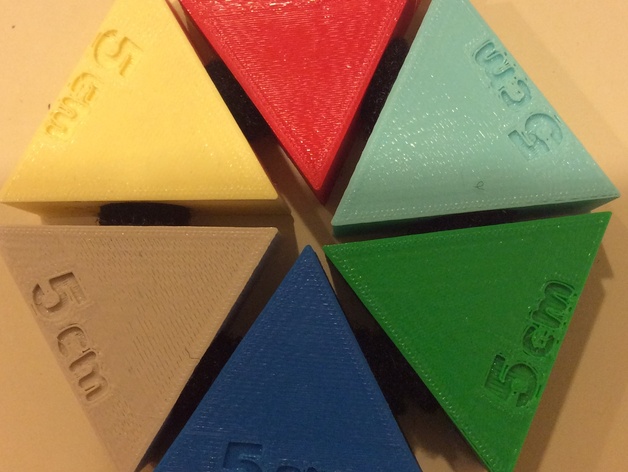
Finding the Area of a Hexagon
thingiverse
Students are presented with a 3D model consisting of six equilateral triangles that form a hexagon, and they are tasked with proving that the hexagon is regular and determining its area. To create this model, I utilized Tinkercad's polygon shape generator by inputting three sides to obtain an equilateral triangle and unchecking the pointed box. Under the size specifics dropdown menu, I selected length of side and set it to 50 mm. The thickness was set to 20 mm. To assemble the triangles, I employed Velcro dots or magnets, which can be sourced from a craft store. The purpose of this activity is to enable students to apply their prior knowledge of finding triangle areas to calculate the area of the hexagon by understanding that it is composed of six equivalent triangles. Skills acquired through this activity include: * Finding the area of right triangles, other triangles, and polygons by decomposing them into rectangles or triangles. * Applying these techniques in real-world and mathematical contexts to solve problems. * Solving real-world and mathematical problems involving area, volume, and surface area of two- and three-dimensional objects composed of triangles, quadrilaterals, polygons, cubes, and right prisms. * Applying the Pythagorean Theorem to determine unknown side lengths in right triangles. Lesson Plan and Activity: To introduce the topic, show students a clip from Sonny With a Chance (season 1, episode 5), where Zora explains geometry using a model that consists of six equilateral triangles stuck together to form a hexagon. This clip can be found on YouTube. Present students with a printed model similar to the one used in the television show, and have them prove that this is indeed a regular hexagon. Ask students to find the area of the hexagon by multiplying the area of one triangle by six. Encourage them to explore other shapes they can create using only equilateral triangles and calculate their areas. Skills Learned: * Area of Triangles * Area of Geometry * Pythagorean Theorem Duration of Lesson: One Day Preparation: * Students should be familiar with hexagons, equilateral triangles, and the number of degrees in each. * Students should know how to find the area of an equilateral triangle and apply the Pythagorean Theorem. Rubric and Assessment: Here is a sample rubric for this activity: Question 3: * Sum of interior angles of hexagon = 720 (1) * Each angle = 120 (1) * Angles in equilateral triangles = 60 (1) Question 4: * Draw perpendicular (1) * Perpendicular splits side length in half (1) * Using Pythagorean Theorem to find height (2) * Area of triangle (1) * Area of hexagon (1) Question 5: * Make triangle and find area (2) * Make rhombus and find area (2) * Make other shape and find area (2) Total: 15 References: For students who need a refresher on finding the area of an equilateral triangle, they can watch Khan Academy videos on this topic. For a review of how to find angles in a regular polygon, they can view the Math is Fun website.
With this file you will be able to print Finding the Area of a Hexagon with your 3D printer. Click on the button and save the file on your computer to work, edit or customize your design. You can also find more 3D designs for printers on Finding the Area of a Hexagon.
